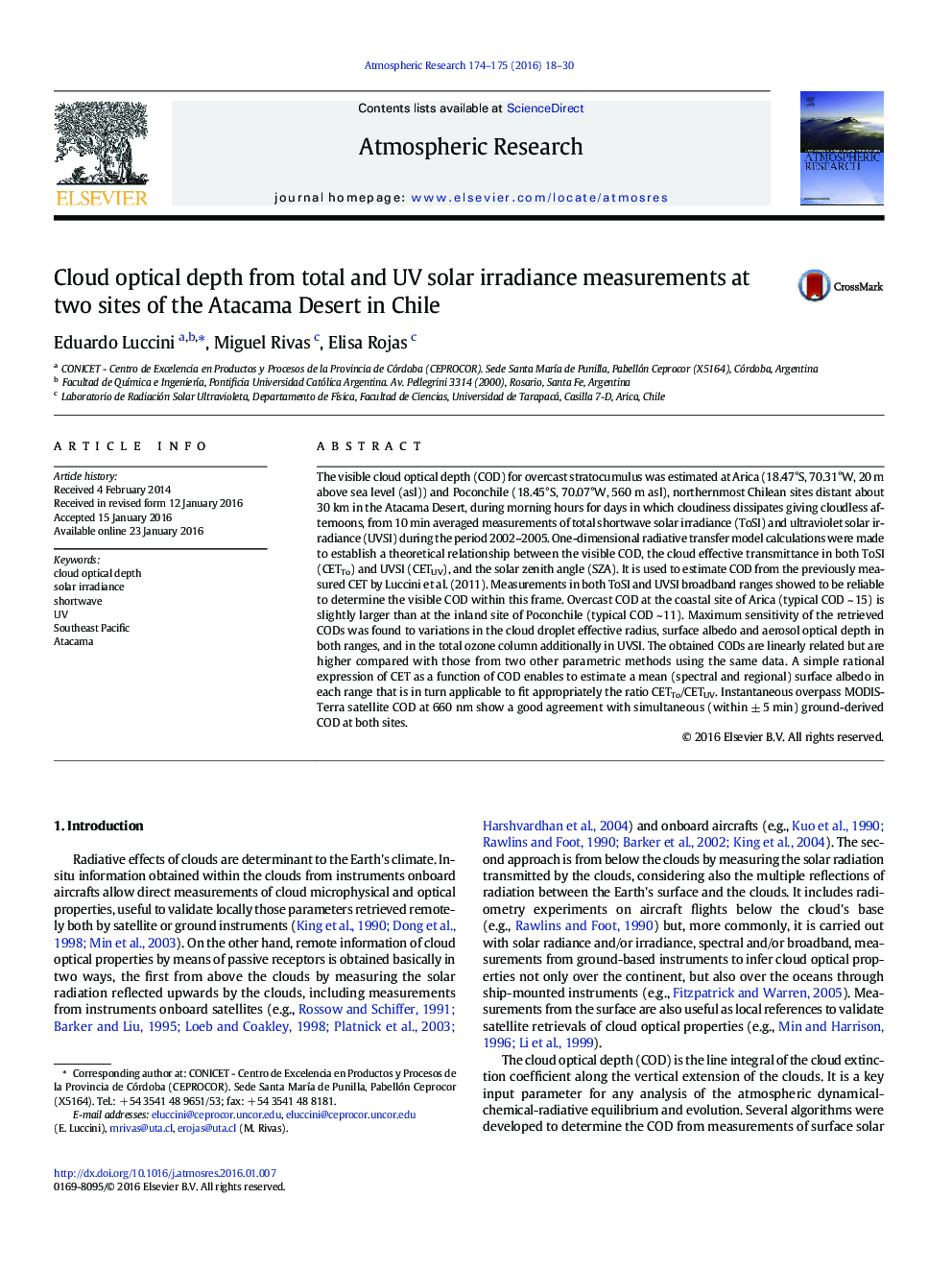| Article ID | Journal | Published Year | Pages | File Type |
|---|---|---|---|---|
| 6343071 | Atmospheric Research | 2016 | 13 Pages |
â¢The cloud optical depth is estimated at Atacama Desert where few local data existâ¢Results are locally relevant due to the strong gradients in the regionâ¢The visible cloud optical depth is determined from both shortwave and UV solar irradianceâ¢Comparison is made with two parameterizations using the same parametersâ¢Comparison with overpass MODIS cloud optical depth shows a good agreement
The visible cloud optical depth (COD) for overcast stratocumulus was estimated at Arica (18.47°S, 70.31°W, 20 m above sea level (asl)) and Poconchile (18.45°S, 70.07°W, 560 m asl), northernmost Chilean sites distant about 30 km in the Atacama Desert, during morning hours for days in which cloudiness dissipates giving cloudless afternoons, from 10 min averaged measurements of total shortwave solar irradiance (ToSI) and ultraviolet solar irradiance (UVSI) during the period 2002-2005. One-dimensional radiative transfer model calculations were made to establish a theoretical relationship between the visible COD, the cloud effective transmittance in both ToSI (CETTo) and UVSI (CETUV), and the solar zenith angle (SZA). It is used to estimate COD from the previously measured CET by Luccini et al. (2011). Measurements in both ToSI and UVSI broadband ranges showed to be reliable to determine the visible COD within this frame. Overcast COD at the coastal site of Arica (typical COD ~ 15) is slightly larger than at the inland site of Poconchile (typical COD ~ 11). Maximum sensitivity of the retrieved CODs was found to variations in the cloud droplet effective radius, surface albedo and aerosol optical depth in both ranges, and in the total ozone column additionally in UVSI. The obtained CODs are linearly related but are higher compared with those from two other parametric methods using the same data. A simple rational expression of CET as a function of COD enables to estimate a mean (spectral and regional) surface albedo in each range that is in turn applicable to fit appropriately the ratio CETTo/CETUV. Instantaneous overpass MODIS-Terra satellite COD at 660 nm show a good agreement with simultaneous (within ± 5 min) ground-derived COD at both sites.
